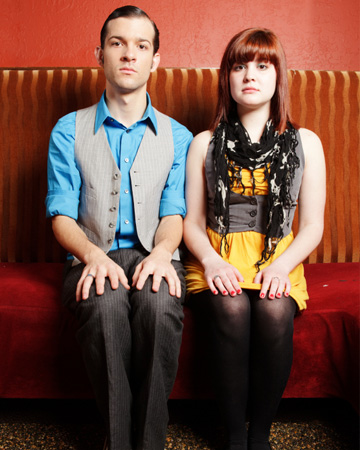Relationship cues

WHAT YOUR BODY SAYS
The way you talk, listen, look, hug, make love, move and react all speak volumes about the state of your emotions and what your body really wants to say. What silent signals are you sending?
Often it's the things you don't say that speak louder than what you do say. Most communication that we send and receive is wordlessly spoken through our facial expressions, body positioning, pace, intensity and tone of voice. Sometimes, your body language is quite obvious and conscious, such as when you scowl and/or give the finger to the driver who just cut you off and almost caused an accident.
"Knowing and dealing with your underlying emotions before speaking and reacting will help you avert miscommunication."
But then there are those times when you think you're giving your partner the glowing reassurance he needs and what you get back is "so you don't really like it." Huh? Or when you sincerely say "I want us to be closer" and he says "don't look at me like that!" Like what? What your body language is conveying makes the difference between being heard, known and received or discounted, ignored and disbelieved.
Body language cues
When you improve your own body language awareness, your ability to effectively communicate, hear and be heard and get what you want will multiply tenfold.
Use this 60 second body language check-in to tune in and make sure your verbal and nonverbal signals are in sync:
My body is…
- Stiff, clenched, crossed, tight-fisted
- Swaying, rocking, fidgeting
- Fatigued, sleepy, droopy
- Comfortable and alert. Shoulders and back are relaxed. Body is open, uncrossed, slightly leaning forward.
My facial expression is...
- Angry and annoyed
- Tense and nervous
- Bored and disinterested
- Emotionally present, calm, friendly and interested
My eye contact is…
- Intense and aggressive
- Anxious and shifting
- Unfocused, unresponsive, looking away
- Focused and calm
My breathing is…
- Shallow and rapid
- Stressed and nervous
- Labored and difficult
- Deep, slow, full and relaxed
My tone is…
- Tight, forced or restricted
- Whining, sulking or shrill
- Angry, demanding or frustrated
- Loving, positive, confident and friendly
My reaction is…
- Too fast: I'm defensive and argumentative.
- Too slow: My attention is drifting in and out.
- Deflective: I'm turning away, blaming, not listening.
- Responsive and inquisitive: I'm emotionally available, listening, interested, wanting to understand.
Obviously, number four is the ideal state you want to be in.
Here's a little secret: The messages your body sends are usually aligned with your emotions. You can begin to make your body and words more congruent by first asking yourself "what is my emotional state right now?" The minute you feel your shoulders tense, jaw tighten or fists clench, it's time to do an emotional check-in.
And don’t forget to watch your breathing! Breathing deep and comfortably naturally influences your mood and thoughts, how your brain and body function and how sensitive your nerves are. Taking a few deep breaths can give you the pause you need to emotionally check in and purposely coordinate your body language with what your mouth (and heart) wants to say.
Knowing and dealing with your underlying emotions before speaking and reacting will help you avert miscommunication, match your body language with your words and deliver a cohesive, congruent message that says what you mean and means what you say.
Watch: 55 Seconds to better body language
Dr. Sheri Meyers shows you how good body language can open the door to better communication.
No comments:
Post a Comment